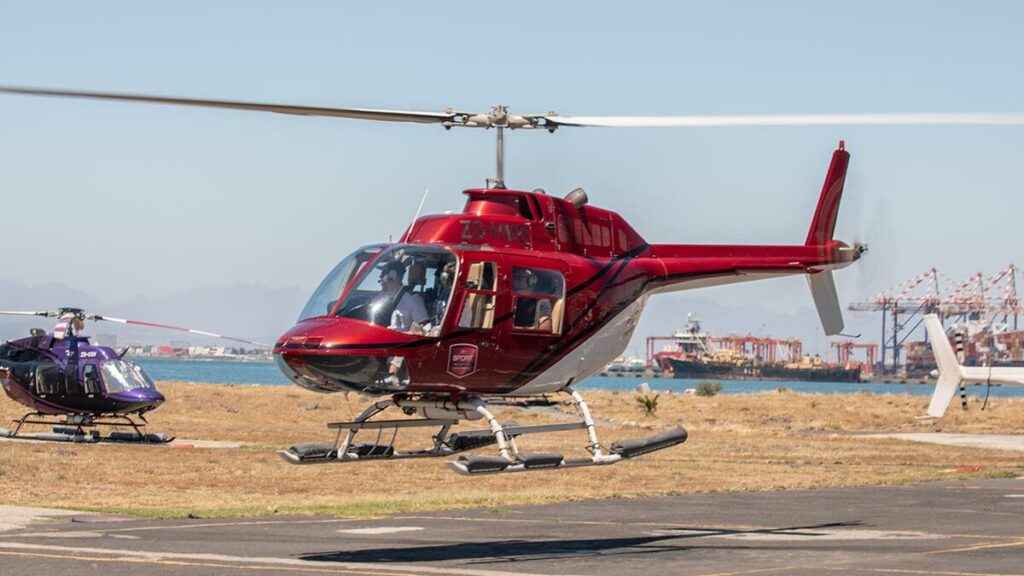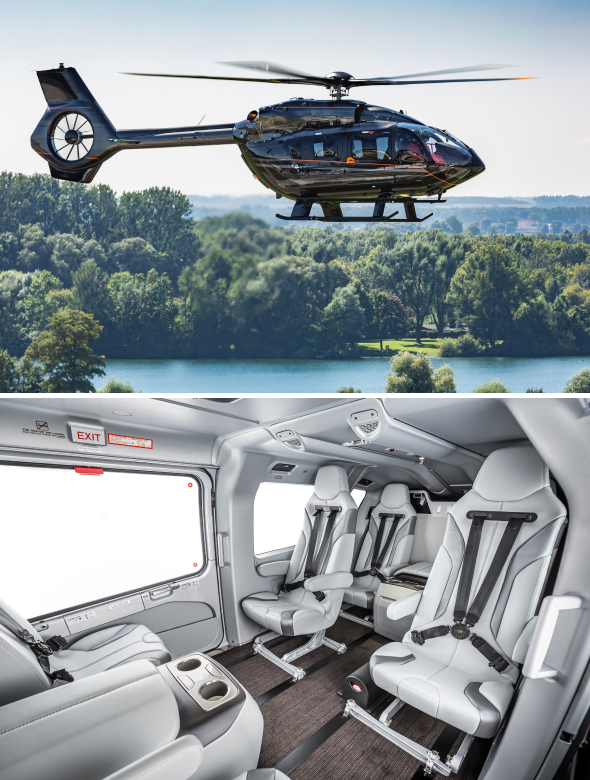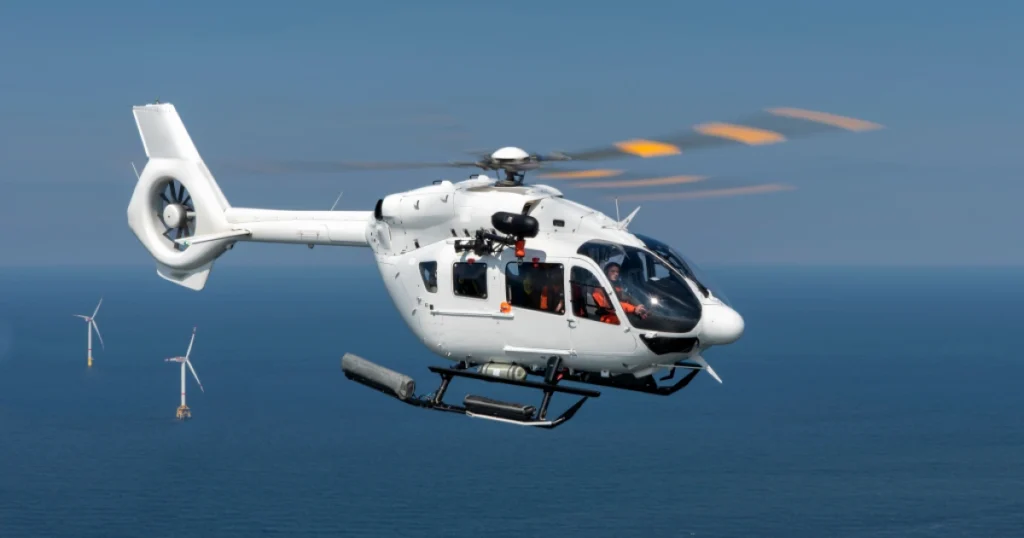When people think about a helicopter losing power in mid-air, their minds often jump to dramatic movie scenes—spinning rotors, alarms blaring, and a fiery crash. In reality, the outcome is far less dramatic, thanks to a flight maneuver called autorotation. This built-in safety feature allows helicopters to glide to a controlled landing, even without engine power. But how does it work, and why is it so effective?

Understanding Helicopter Flight Mechanics
To grasp what happens during a power loss, we first need to understand how helicopters fly. Unlike airplanes, helicopters use rotor blades to create lift, enabling vertical takeoffs, landings, and hovering. These blades are powered by an engine—usually a turbine or piston engine—that spins the rotor system.
The main difference between helicopters and airplanes is that airplanes rely on forward motion and fixed wings, while helicopters can generate lift and thrust vertically thanks to their rotating blades.
Engine Failure in Helicopters – Is It Fatal?
Engine failure in a helicopter is not a death sentence. While it certainly creates a serious emergency, pilots are trained extensively to handle it. Power loss mid-air can occur due to several reasons, such as:
- Fuel exhaustion
- Mechanical failure
- Bird strikes
- Engine overheating
When the engine quits, the helicopter doesn’t instantly fall. Instead, the pilot transitions into autorotation, a glide-like descent powered not by the engine but by the upward airflow through the rotors.

What Is Autorotation?
Autorotation is a lifesaving maneuver where the helicopter’s rotors continue spinning due to airflow from below, not the engine. This is possible because helicopters are designed with a freewheeling clutch mechanism that disconnects the rotor system from the engine when power is lost.
During autorotation, the rotor blades maintain enough rotational energy to control the descent and allow the pilot to perform a smooth landing—ideally on a clear, flat surface.
The Physics Behind Autorotation
In powered flight, rotor blades receive energy from the engine to create lift. During autorotation, however, air flows upward through the blades, turning them much like a windmill. The key forces at play are:
- Inertia: The blades store kinetic energy, helping maintain rotation.
- Lift and drag: Even without engine power, the spinning blades create lift to slow the descent.
This controlled descent gives the pilot time and control to choose a safe landing spot and cushion the landing with a maneuver called flaring, which briefly increases lift at the bottom of the descent.
How Pilots Perform Autorotation
Here’s what a trained helicopter pilot does when engine failure hits:
- Lower the collective – This reduces blade pitch and increases rotor RPM using airflow.
- Adjust airspeed – Maintain forward motion for better glide distance.
- Scan for a landing site – Open fields, roads, or clearings are ideal.
- Control the descent – Use cyclic and pedals to steer the craft.
- Execute the flare – Just before touchdown, pull up to reduce vertical speed.
This entire process happens in seconds but is drilled into pilots through rigorous simulation and real-world practice.
Role of Altitude and Airspeed During Engine Failure
The effectiveness of autorotation heavily depends on the helicopter’s height and speed at the time of engine loss. The higher the altitude, the more time the pilot has to react. Airspeed also helps maintain airflow through the rotors, aiding in smoother descent and longer glide.
How Long Can a Helicopter Glide Without Power?
While it varies by model, most helicopters can glide up to 1-2 miles per 1,000 feet of altitude during autorotation. Lighter helicopters often perform better due to lower inertia demands and higher maneuverability.
Real-world cases show helicopters landing safely even after losing power at relatively low altitudes—some as low as 300-500 feet.

Can a Helicopter Land Safely After Losing Power?
Yes, helicopters can and often do land safely without engine power. While the landing may not be soft as a feather, skilled pilots can reduce the impact force significantly using flare and rotor inertia. Emergency landing zones include:
- Open fields
- Roadways
- Golf courses
- Even rooftops in some urban areas
Misconceptions About Helicopter Power Loss
Let’s bust a few myths:
- Myth: Helicopters fall straight down if the engine stops.
Truth: They glide using autorotation. - Myth: Only advanced helicopters can autorotate.
Truth: Almost all helicopters are designed with this ability.
Historical Examples of Successful Autorotations
In 2008, a Robinson R44 helicopter lost engine power over Florida. The pilot successfully autorotated and landed in a parking lot with minor damage and no injuries.
Similarly, many military and medical helicopters have recorded successful autorotations over decades of flying.
Pilot Training for Engine Failure Scenarios
Helicopter pilots don’t just hope for the best—they train rigorously to master autorotation under various scenarios. Flight schools use simulators and real aircraft to rehearse engine-out procedures.
Key elements of training include:
- Practicing autorotation from different altitudes
- Reacting quickly to loss of rotor RPM
- Learning to identify landing zones under pressure
- Understanding how wind, terrain, and visibility affect outcomes
Military and commercial pilots undergo regular check-rides and assessments to maintain proficiency in emergency landings.

Safety Features That Support Autorotation
Modern helicopters are equipped with safety mechanisms to support autorotation, including:
- Freewheeling units: These disconnect the engine from the rotor, allowing it to spin freely during power loss.
- Low RPM alarms: Audible and visual warnings alert the pilot to rotor speed drops.
- Dual control systems: Provide redundancy in case of mechanical failure.
- Crash-resistant fuel systems: Reduce the risk of fire during emergency landings.
These features work together to enhance the chances of a safe autorotative landing.
Differences Between Single and Twin-Engine Helicopters
Single-engine helicopters, like the Robinson R44 or Bell 206, rely heavily on autorotation when power is lost. They are simpler and more economical but require precise handling in emergencies.
Twin-engine helicopters, such as the Sikorsky S-76 or Airbus H145, offer redundancy. If one engine fails, the other can often keep the helicopter airborne. However, pilots are still trained in autorotation in case both engines fail—such as due to fuel exhaustion.
Environmental Factors That Influence Autorotation
Not all emergency landings are equal. Several external factors impact how smoothly a helicopter can autorotate:
- Wind: Helps or hinders forward motion and flare effectiveness.
- Terrain: Open fields are ideal; forests, mountains, or urban zones add complexity.
- Weather: Rain, fog, or snow can obscure visibility and affect decision-making.
- Obstacles: Power lines, buildings, and trees limit landing site options.
Experienced pilots assess these factors in real time to maximize safety.
Future Technologies Enhancing Helicopter Safety
Emerging technologies are improving helicopter survivability in power loss scenarios:
- Electric hybrid backup systems can briefly power rotors after engine failure.
- AI and automation are being developed to aid in emergency decision-making.
- Advanced sensors help detect mechanical issues before failure occurs.
- Tilt-rotor aircraft like the V-22 Osprey offer hybrid flight modes for improved resilience.
These innovations could one day make engine-out emergencies even safer than they are now.
What Passengers Should Know During Engine Failure
If you’re ever a passenger during a helicopter power failure, here’s what you should do:
- Stay calm – The pilot is trained for this.
- Buckle up – Keep your harness or seatbelt tight.
- Follow instructions – Listen carefully to any commands from the pilot.
- Brace for landing – Adopt the position advised by the crew, similar to airplane emergency landings.
Remember, autorotation is a planned maneuver, not a crash.
Conclusion: Why Helicopters Don’t Just Drop from the Sky
So, what happens if a helicopter runs out of power mid-air? It doesn’t fall like a stone—it glides. Thanks to autorotation, a highly effective and well-practiced emergency landing technique, most power-loss incidents are survivable.
Helicopter pilots undergo extensive training for these scenarios, and aircraft are engineered to enable controlled descents. While engine failure is always serious, it is by no means hopeless. The next time you see a helicopter overhead, remember: even in the worst-case scenario, it’s still got a plan.
FAQs About Helicopters Losing Power Mid-Air
1. Can a helicopter glide like an airplane when the engine fails?
Yes, helicopters use autorotation to glide and land safely, though it’s a vertical descent rather than a long horizontal glide.
2. How much time does a pilot have to react during engine failure?
Typically just seconds, depending on altitude. That’s why training is crucial.
3. Has anyone survived a helicopter engine failure mid-air?
Absolutely. Many successful autorotations have been documented with no injuries.
4. Do all helicopters have autorotation capability?
Yes, virtually all helicopters are designed to autorotate.
5. What’s the difference between autorotation and a crash?
Autorotation is a controlled descent; a crash is uncontrolled. When done correctly, autorotation avoids the crash.
6. Why don’t helicopters have parachutes?
Parachutes aren’t practical due to low altitude operations and rotor interference. Autorotation is more effective and reliable.

Leave a Reply